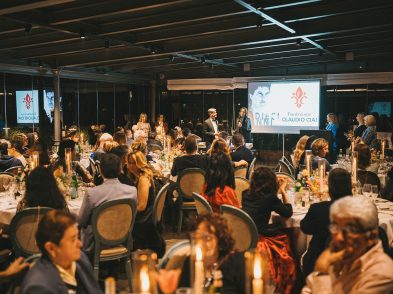Culturally and historically, Italy does not have an overtly philanthropic nature, or perhaps it is fairer to say that, traditionally speaking, giving back to the community has not represented a mainstream mentality: while the important charity work of confraternities and the like have centuries of history, and Italy is at the international forefront of international aid work through such organizations as Emergency, there are no charity balls, no crazy events in aid of a particular association. Schools, for instance, usually do not take part in charity awareness activities—they are too busy trying to raise funds for themselves in this cash-strapped economy.
Many years ago, I tried to invite friends to my young son’s birthday party and asked for no gifts, just an envelope containing 5–10 euro to donate to a charity of his choice.
Everyone turned up with a gift and an envelope, looking at me rather strangely.
Now things are changing. In fact, the charity and volunteer sector has changed in Florence. Increasing numbers of non-profit organizations are starting up, and data on volunteering shows a remarkable trend over the last 10 years.

The last census figures showed that the number of non-profit organizations with headquarters in the province of Florence had increased by 46.5% between 2001 and 2011, with a 32.4% increase in the number of employees in the sector. And this trend was echoed across the whole of Tuscany. Taking into consideration the global recession, which started in 2008, and Italy’s current and very real continuing economic woes, these figures are even more astounding.
What are these non-profit organizations doing? In Florence, culture, sport and education account for just over 60% of activities; the rest are focused on social services, civil protection, education and research, trade union relations, health, rights protection and politics.
Although money is scarce for most people at the moment, another way of giving back to the community is through volunteering, and over the same 10-year period the number of volunteers has jumped from approximately 86,000 to 124,000 Florentines; vital to the associations as over 90% of the non-profit workforce is made up from those who provide free labour. The same trend can be identified, too, for charity foundations and social cooperative businesses.
Volunteers in Tuscany alone account for 9.2% (almost one-tenth) of all Italian volunteers, but Tuscany only accounts for about 6 percent of all Italian residents. Those figures suggest heightened awareness about the importance of giving back to the community, a social metric that is looking increasingly positive.
Centro Servizi Volontariato Toscana (Cesvot) maintains that volunteers in Tuscany increased by 10% in just one year (2012–2013), and now 300,000 people are working across a multitude of sectors: social work (33.45%), health (28.5%) and culture (10%), the remainder being involved in civil protection, environmental protection, public health care, rights protection and overseas activities.
Increasingly, volunteer associations are becoming active in environmental, cultural, civil protection and overseas projects. Today, just over 46% of Tuscan volunteers are women, particularly noticeable when it comes to politics, in which women are becoming very active.
Cesvot alone over the past 10 years has given 6,000 consultations, supported 682 projects to the tune of almost 19 million euro, and has provided 2,048 training courses for 30,000 participants. This booming volunteerism is changing the face of the region.
All this is promising news for the Tuscan economy, which is still seeking to find a way out of stagnation and depression. Economic development and social well-being are closely linked to growth in non-profit organizations, and to see the region increasingly involved in ‘paying forward’—that is, investing heavily in future well-being and social development—is very exciting indeed. It is even more exciting to think that Tuscany is radically changing its attitude to traditional individual values and lifestyles, taking steps to improve and protect this magnificent landscape, historical heritage and the lives of all those who live here.
‘How can we help?’ is the question being asked by an increasing number of Florentines, who understand the return on investment of giving a helping hand.
For those who live in and around Florence and would like to volunteer or contribute to local non-profit organisations, see theflr.net/volunteer.







